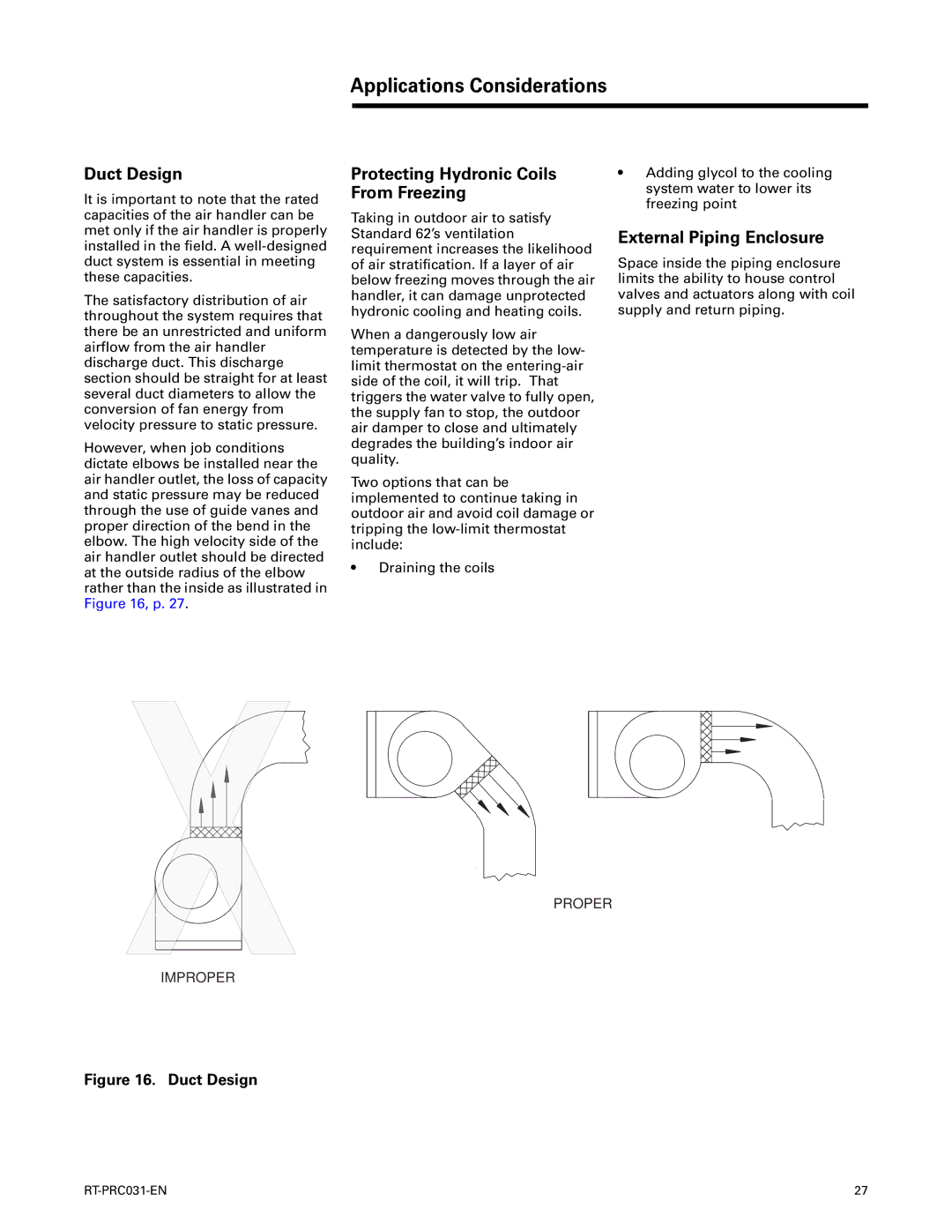
Applications Considerations
Duct Design
It is important to note that the rated capacities of the air handler can be met only if the air handler is properly installed in the field. A
The satisfactory distribution of air throughout the system requires that there be an unrestricted and uniform airflow from the air handler discharge duct. This discharge section should be straight for at least several duct diameters to allow the conversion of fan energy from velocity pressure to static pressure.
However, when job conditions dictate elbows be installed near the air handler outlet, the loss of capacity and static pressure may be reduced through the use of guide vanes and proper direction of the bend in the elbow. The high velocity side of the air handler outlet should be directed
Protecting Hydronic Coils From Freezing
Taking in outdoor air to satisfy Standard 62’s ventilation requirement increases the likelihood of air stratification. If a layer of air below freezing moves through the air handler, it can damage unprotected hydronic cooling and heating coils.
When a dangerously low air temperature is detected by the low- limit thermostat on the
Two options that can be implemented to continue taking in outdoor air and avoid coil damage or tripping the
•Adding glycol to the cooling system water to lower its freezing point
External Piping Enclosure
Space inside the piping enclosure limits the ability to house control valves and actuators along with coil supply and return piping.
at the outside radius of the elbow rather than the inside as illustrated in Figure 16, p. 27.
IMPROPER
•Draining the coils
PROPER
Figure 16. Duct Design
27 |
